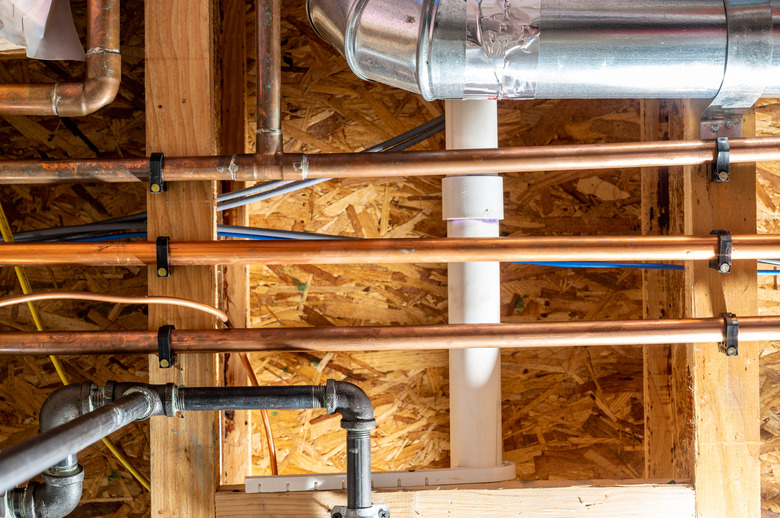How To Make Leak-Detection Soap
We may receive a commission on purchases made from links.
A leak in any gas piping system in your home, whether the pipes transport natural gas, propane, or refrigerant, presents a serious problem. Gas leaks can result in explosions and fires, and refrigerant leaks can be environmental mini-disasters, depending on the age of your cooling system or refrigerator. It's easy to detect gas leaks with a soap solution, provided the solution has the proper viscosity for bubbles to form.
It's About Surface Tension
It's About Surface Tension
Any child who has tried to blow bubbles knows about surface tension — the cohesive force between molecules at the surface of a liquid. The surface tension of water — while strong enough to provide secure footing for certain water bugs — is too weak to make lasting bubbles, while that of liquid soap is too strong. The best bubble-blowing solution combines soap and water.
To detect gas leaks, you have to combine them in approximately the same ratio that a child would use to blow bubbles, but with maybe a little less soap, because the pressure a gas leak produces is usually less than that produced by a child blowing bubbles.
Ask the Experts
Ask the Experts
Professional propane, natural gas, and refrigeration technicians aren't specific about how to mix a good leak-detection soap solution; they usually simply recommend using a soap/water mixture. If you want to know the best solution for producing bubbles, you should ask the bubble-blowing sector of the population — the people for whom bubble quality matters. Kids who make the best bubble mixtures often learn from such kid-friendly sources as the Exploratorium.
Bubble Recipe for Leak Detection
Bubble Recipe for Leak Detection
The Exploratorium website offers two recipes for bubble-blowing formulas, using two different dishwashing detergents. The recipes are similar and can be combined into one that will work using a generic dish detergent:
- Fill a quart jar with clean water.
- Measure and add 3 tablespoons of dish detergent.
- Add 2 teaspoons of liquid glycerin to make the bubbles last longer, which makes them easier to detect.
- Stir to mix the solution.
The solution becomes more effective if you leave it overnight in an open container. In fact, the longer you leave it, the better the bubbles it produces.
Avoid Corrosive Ingredients
Avoid Corrosive Ingredients
While you can choose from a number of other bubble-blowing recipes, most involve the three key ingredients: dish soap, water, and glycerin. Check the label for the ingredients in the dishwashing detergent you're using, and choose another product if the ingredients include ammonia or salt. Both are corrosive and may damage copper pipes.
